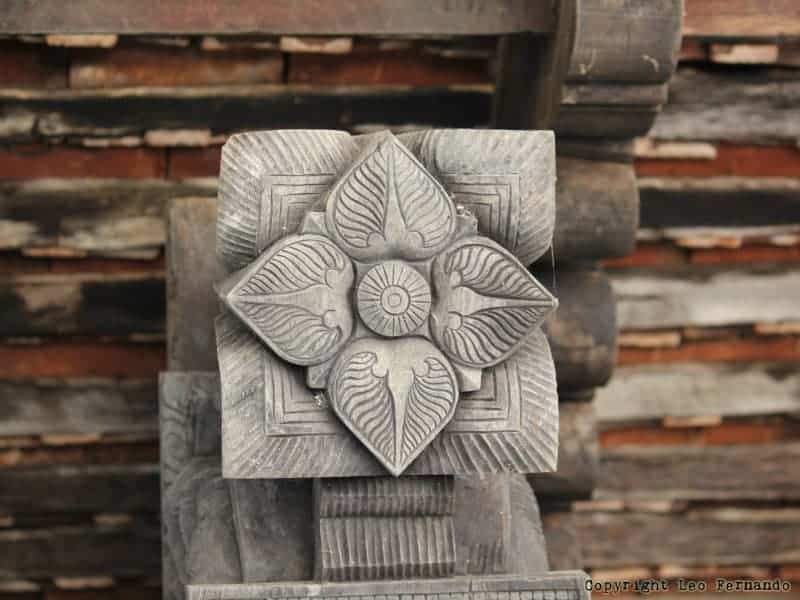Embekka Devale is one of the three most famous historical hot spots from the Gampola Kingdom, a building famous around the world for its incredible woodwork. Embekka Devale was the brainchild of King Vikramabahu III (ruled 1357-1374). It is situated in the vicinity of Daulgala, eight miles away from Kandy. The shrine as a whole consists of three sections called the “Digge”, “Hevisi Mandapa” and “Gargha Shrine”. It is the drummers’ hall or “Hevisi Mandapa” that has attracted to most attention due to its wood carvings and is usually the only part of Embekka Devale that is actually visited on a regular basis. This particular building gets its name from an incredibly colorful character in local lore named Henkanda Biso Bandara.
This legendary queen was said to be the king’s chief consort but was later deified as a protector goddess. She and a drummer named Rangama are said to have had a similar dream about building a three-story structure here, although all that remains is pretty much a longhouse-like building.
However, there is evidence to suggest that Embekka Devale has been restored by the later monarchs of Kandy and that what remains is merely the lowermost floor.
As for the king, he had it built in honor of a localized deity, the King Mahasen who is often recognized as a form of Lord Murugan’s Sri Lankan version named Kataragama Deiyo. Another god worshipped on-site is the provincial deity Devatha Bandara. The pillars of the shrine are made of wood, and the carvings are so intricately done that it is possible to make out almost every feature and detail quite easily.
Among these are mythological motifs of Sinhalese art found nowhere else, including kinnaras (half-bird, half-woman), the two-headed bheruda pakshiya, the elephant-lion-eagle chimera gajasingha and even the more classical and ubiquitous makara. However, there are also scenes of early life here. One of the carvings shows us a representation of two warriors engaged in the local martial art of Angam Pora while another shows a breastfeeding mother.
Among the most unique features here is the catch pin on the ceiling. This catch pin, or the Madol Kurupawa actually holds the ceiling’s twenty-six rafters in place. It is a piece of work not seen anywhere else in historical wooden structures.
Written by Vasika Udurawane for Travel Lanka Compass



0 Comment